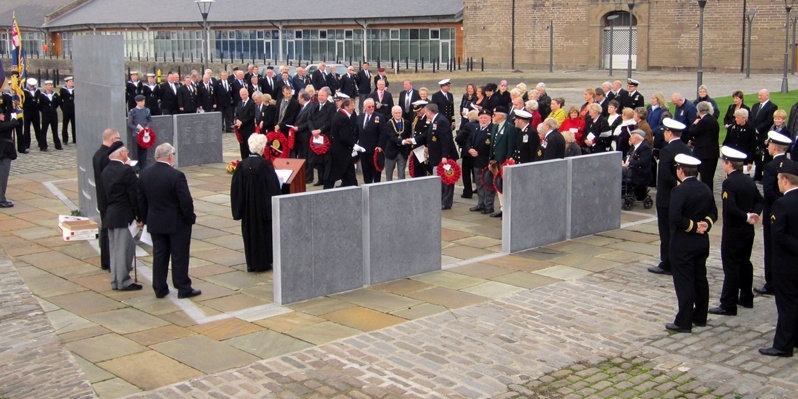Almost 300 Dundee-based sailors and commandos who lost their lives during the Second World War were remembered at a ceremony on Saturday.
British and Norwegian submariners, veterans and diplomatic representatives from Russia, Poland, the Netherlands and Norway gathered at the Dundee International Submarine Memorial, near Victoria Dock, for the memorial service.
Lord Provost John Letford paid tribute to the bravery of the sub-mariners who formed the wartime Dundee flotillas, and Deputy Lord Lieutenant Charles Webster read the roll call of the fallen.
Wreaths were laid by Commodore Jake Moores on behalf of the Royal Navy and Captain Aslak Heen on behalf of the Royal Norwegian Navy.
In 1939 Dundee was the base of the Royal Navy’s 2nd submarine flotilla and, from 1940 to 1946, of the 9th submarine flotilla.
Russian submarine crews were also based in Dundee in the summer of 1944.
Situated next to the Clocktower Development in the centre of the docks, the memorial commemorates the six British, Dutch, Norwegian and Russian submarines lost while on patrol from Dundee and their 296 sailors and commandos who are ”still on patrol”.
The first casualty among the Dundee-based subs was destroyed by so-called friendly fire just a week after hostilities broke out. HMS Oxley was sunk in error by HMS Triton on September 10 1939, with the loss of 53 crew.
Another 51 died after an error, when the B-1 was sunk by RAF fire off Norway after sailing from Dundee to join the Soviet Northern Fleet.
Dundee submarines were involved in some of the most daring naval operations of the war, one heavily damaging the cruiser Gneisenau and another blowing the stern off the cruiser Prinz Eugen.
Enemy supply convoys were attacked and, using intelligence provided by Bletchley Park code breakers, U-boats heading for Allied convoys were intercepted and sunk.
Agents, saboteurs, weapons and supplies were landed deep inside Norwegian fjords and patrols were maintained far inside the Arctic Circle to protect convoys carrying supplies to the Soviet Union.
